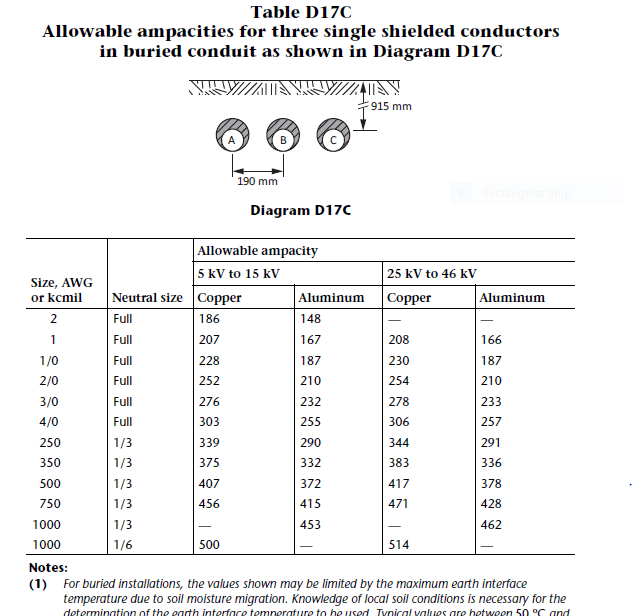Edelma_1
Electrical
- Apr 16, 2024
- 31
Hello Everyone,
Which of these current ratings is used as the standard current ratings for cable:
Cyclic, Sustained or Distribution.
For example;
A 630mm2 Cu cable (dry XLPE type) has a "Winter SUSTAINED Current Rating" of 841 Amperes, a "Winter CYCLIC Current Rating" of 948 Amperes and a "Winter DISTRIBUTION Current Rating" of 1015 Amperes.
Are we supposed to use the worst case scenario? which would be the "Summer Current Ratings" since temperatures are going to be the highest recorded in the season increasing the resistance of the cable.
For Summer we have, Summer SUSTAINED Current Rating" of 756 Amperes, a "Summer CYCLIC Current Rating" of 874 Amperes and a "Summer DISTRIBUTION Current Rating" of 959 Amperes.
N.B: - THIS IS FOR A 33kV SINGLE CORE X.L.P.E. INSULATED LEAD SHEATH & M.D.P.E. OUTER SHEATH CABLES, LAID IN PVC DUCT UNDERGROUND. (Dry design)
Which of these current ratings is used as the standard current ratings for cable:
Cyclic, Sustained or Distribution.
For example;
A 630mm2 Cu cable (dry XLPE type) has a "Winter SUSTAINED Current Rating" of 841 Amperes, a "Winter CYCLIC Current Rating" of 948 Amperes and a "Winter DISTRIBUTION Current Rating" of 1015 Amperes.
Are we supposed to use the worst case scenario? which would be the "Summer Current Ratings" since temperatures are going to be the highest recorded in the season increasing the resistance of the cable.
For Summer we have, Summer SUSTAINED Current Rating" of 756 Amperes, a "Summer CYCLIC Current Rating" of 874 Amperes and a "Summer DISTRIBUTION Current Rating" of 959 Amperes.
N.B: - THIS IS FOR A 33kV SINGLE CORE X.L.P.E. INSULATED LEAD SHEATH & M.D.P.E. OUTER SHEATH CABLES, LAID IN PVC DUCT UNDERGROUND. (Dry design)



